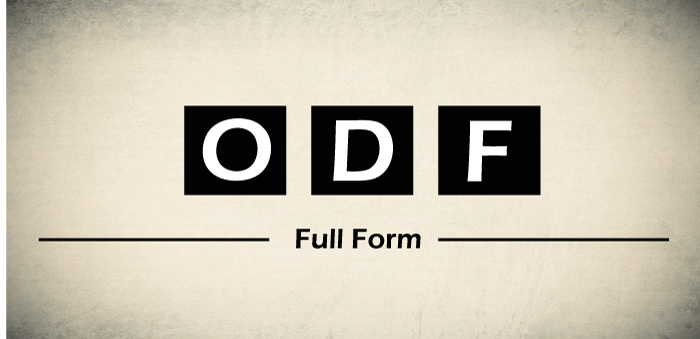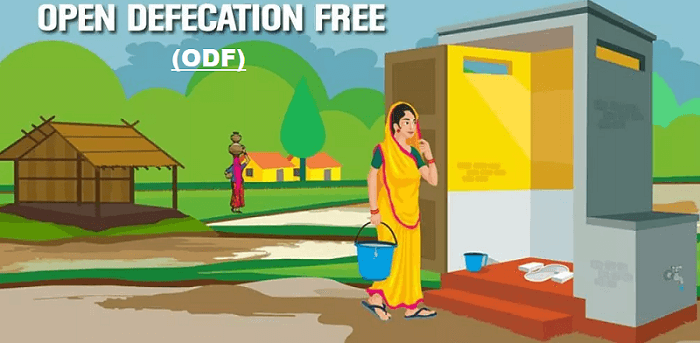What is the Full Form of ODF(i) ODF: Open Document FormatODF stands for Open Document Format. The Open Document Format for Office Applications (ODF), commonly referred to as OpenDocument, is an open file format that uses ZIP-compressed XML files for word processing documents, spreadsheets, charts, and presentations. It was created to offer an open, XML-based file format definition for office software. Also, it serves as the default document format in most Linux systems. 
A technical group within the Organization for the Advancement of Structured Information Standards (OASIS) consortium is involved in developing and maintaining the standard. It was initially created for StarOffice to establish an open platform for office documents. It was based on the OpenOffice.org XML specification from Sun Microsystems, which is the standard format used by OpenOffice.org and LibreOffice. ODF files, commonly known as "OpenDocument", contain easily recognizable extensions like the .doc or.xls extensions used by Microsoft. ODF is supported by several software programs and computing platforms, such as OpenOffice, KOffice, and StarOffice. The following are the most regular filename extensions for OpenDocument documents:
An XML document with a root element makes up the original OpenDocument format. By dividing the content, styles, metadata, and application settings into four distinct XML files, OpenDocument takes advantage of the principle of separation of concerns. A ZIP compressed archive containing a number of files and directories can also be used to store OpenDocument files; these can include binary content and benefit from ZIP's lossless compression to minimize file size. (ii) ODF: Open Defecation FreeAnother full form of the word ODF is Open Defecation Free. The phrase "Open Defecation Free", which in its complete form means "ending the human practice of defecating outside", can be referred to as a scheme through which the state governments are trying the get rid of open defecation. Humans use outdoors open areas as a toilet instead of closed toilets is referred to as open defecation. For faeces, people favour fields, shrubs, forests, ditches, roads, canals, and other open areas. It is mostly seen in rural areas. 
Visible faeces are sometimes discovered in the environment, which can adversely affect humans and cause numerous diseases. In certain regions, even individuals who have bathrooms in their houses prefer to go outside. Village homes, as well as governmental and municipal organizations, use secure technical options for the disposal of faeces to carry out ODF sustainability. Open Defecation Illnesses/ DiseasesDid you know that 1 gram of faeces contains 1,000 parasitic cysts, 1 million bacteria and 10 million other viruses? A child's faeces have more germs in them than an adult's. Poor sanitation puts people at risk for physical assaults, open contact, such as snake bites, and privacy for women and girls. It also poses a major threat to children's health. Additionally, open defecation contributes to numerous water and vector-borne illnesses. Water-Borne IllnessesDue to the misconception that faeces will be washed away by water, open defecation frequently occurs adjacent to waterways and rivers. However, most of these places lack the necessary power to cleanse the water to eliminate faecal matter and the germs that travel in it, contaminating the primary water source. Water-borne illnesses, including cholera, typhoid, and trachoma, are brought on when households consume contaminated water while drinking and cooking. Vector-Borne IllnessesThe presence of human faeces also draws flies and other insects, which transmit the germs throughout the surroundings and pose a health risk. ODF InitiativeDespite the Swachh Bharat Abhiyan's commencement in October 2014, there was no accepted definition of ODF until June 2015. Every town, village, and state had its own definition of what qualified as ODF. Swachh Bharat Mission (Gramin) described ODF as follows on June 9, 2015, to establish a uniform parameter: ODF, the end of faecal-oral transmission, is defined as:
The term "safe technology option or solution" refers to methods of sewage disposal that don't cause contamination of the ground, surface, or groundwater, make excreta inaccessible to animals and flies, don't require handling of fresh excreta, and are free of odour and ugly conditions.
Next TopicFull Form
|
 For Videos Join Our Youtube Channel: Join Now
For Videos Join Our Youtube Channel: Join Now
Feedback
- Send your Feedback to [email protected]
Help Others, Please Share










